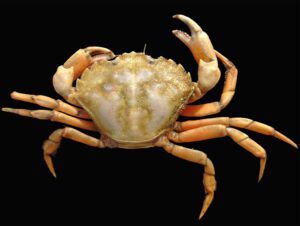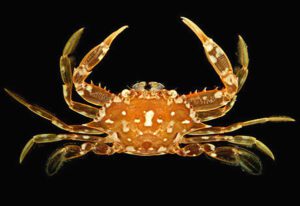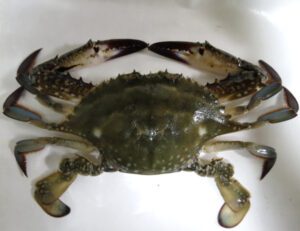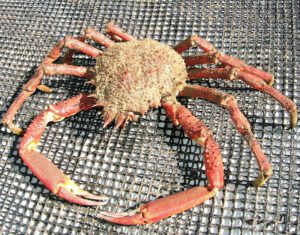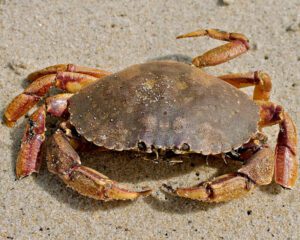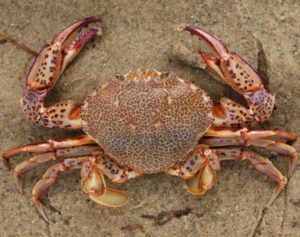The Mud crab is a species of crab which is found in the estuaries and mangroves of Asia, Australia and Africa. Mud crabs are highly valued for their meat. They are commercially harvested in many countries (with China and Australia being the largest producers). It an economically very important crab species.
It is also known as Scylla serrata, Mangrove crab, Black crab, Serrated Swimming crab, Giant Mud crab, Mangrove crab, Indo-Pacific Swamp crab, Edible Mud crab etc.
Natural range of the Mud crab is in the Indo-Pacific. It is found from South Africa, around the coast of the Indian Ocean to the Malay Archipelago.
As well as from southern Japan to south-eastern Australia, and as far east as Fiji and Samoa. It has also been introduced to Hawaii and Florida. Read some more information about this crab species below.
Habitat and Distribution
Mud crabs are found in estuaries and mangrove swamps in tropical and subtropical regions around the world. They prefer brackish water (which is a mix of salt and freshwater) and are often found in areas with muddy or sandy bottoms. They are also known to migrate from the mangroves to the open sea during certain stages of their life cycle.
Characteristics
Mud crabs are characterized by their large, hard shells and powerful claws. They have a brownish-green color and can grow up to 25 centimeters in width. Their shells are covered in small bumps and ridges, which provide protection from predators and help them blend in with their environment.
Mud crabs have five pairs of legs, with the front two pairs being modified into large claws, which they use to catch prey and defend themselves.
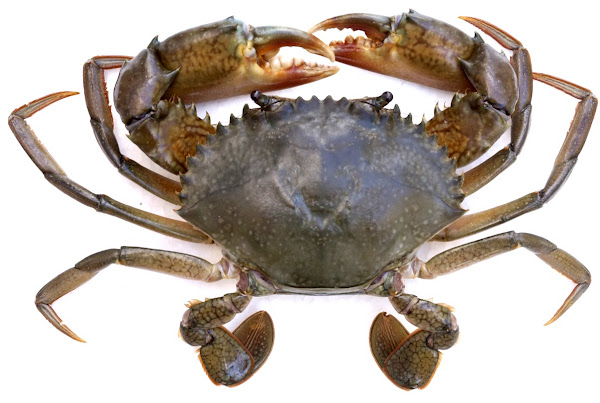
Diet and Feeding Habits
Mud crabs are omnivorous and will eat a wide variety of foods, including small fish, crustaceans, mollusks, and algae. They are also known to scavenge for dead animals and plant matter. They are opportunistic feeders and will consume whatever food sources are available in their environment.
Life Cycle
Mud crabs go through several stages of development during their life cycle. The females lay eggs, which hatch into larvae that float in the water. These larvae then settle on the bottom and begin to develop into juvenile crabs.
The juveniles continue to molt and grow until they reach maturity, which can take several years. Once mature, the mud crabs mate and the females lay eggs to start the process over again.
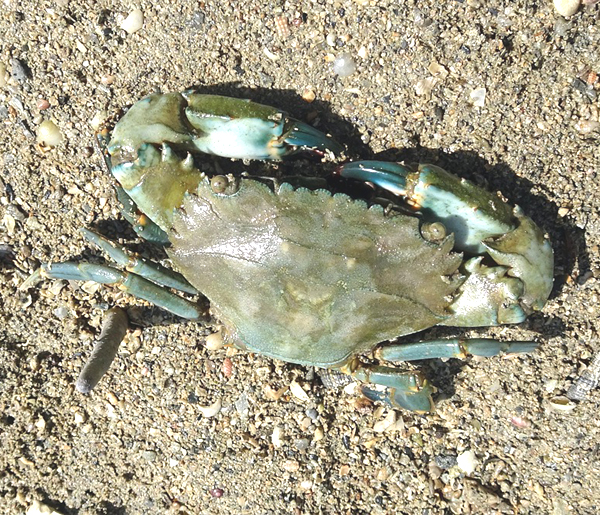
Breeding
The Mud crabs migrate offshore for spawning. They generally become mature when they reach around 9 cm carapace width. In most cases they become mature within their first year of life.
The male crabs generally approach females, before the females have undergone a precopulatory molt. Males start grasping them with their chelipeds and first pair of walking legs and carrying them around for up to several days until the females molt. Usually, an average sized female crab can produce up to 2 million eggs. The eggs take a few weeks to hatch.
Uses
The Mud crab is mainly used for food. It is very popular as food throughout it’s range and also globally.

Special Notes
The Mud crab is an economically very important species in it’s native range. It is mainly collected by using traps, trawling, hooking, baited wire mesh pots and also by hand. These crabs are generally a very hardy and entertaining crab species and they are tolerant of most water conditions.
The Mud crabs are sold at international market at very high prices. And due to their high price and high demand, interest in aquaculture of this species has been high.
Commercial Mud crab farming business is gaining popularity day by day. They have very high flesh content, and rapid growth rates in captivity. And they also have a high tolerance to both nitrate and ammonia.
The Mud crab is mainly used for food and very popular. It is generally cooked with it’s shells on. They can be served as one of many types of soft-shell crab, when they molt their shells. They can be prepared for cooking by placing them in a freezer for up to 2 hours before cooking.
Hard-shells Mud crabs are generally marketed alive. But the soft-shell crabs are marketed frozen. It is probably the most common crab species in many markets of Southeast Asia. However, review full breed profile of this crab in the table below.
| Name | Mud Crab |
| Kingdom | Animalia |
| Phylum | Arthropoda |
| Class | Malacostraca |
| Order | Decapoda |
| Family | Portunidae |
| Genus | Scylla |
| Species | S. serrata |
| Binomial Name | Scylla serrata |
| Other Names | Also known as Scylla serrata, Mangrove crab, Black crab, Serrated Swimming crab, Giant Mud crab, Mangrove crab, Indo-Pacific Swamp crab, Edible Mud crab etc. |
| Breed Purpose | Food |
| Special Notes | Commercially important crab species, mainly collected by using traps, trawling, hooking, baited wire mesh pots and also by hand, very hardy crabs, tolerant of most water conditions, sold at very high prices in the international markets, high demand on the market, commercial aquaculture is gaining popularity day by day, very high flesh content, rapid growth rate in captivity, mainly used for food, marketed alive, most common crab species in many markets of Southeast Asia |
| Weight | Can reach up to 3 kg |
| Breeding Method | Natural |
| Climate Tolerance | Native climate |
| Body Color | Varies from a deep, mottled green to very dark brown |
| Rarity | Common |
| Availability | Asia, Australia and Africa |
